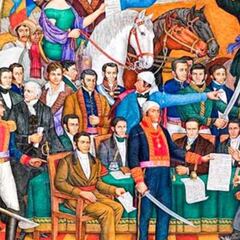Ethnicity gets a little confusing when trying to differentiate between Hispanic, Latino and Spanish origin. How do they differ?

What is the difference between Hispanic and Latino?
When it comes to ethnicity, there is a subtle difference between a person who is described/identifies as being Latino/a to someone who is Hispanic. It gets even more complicated when both either get lumped together or confused.
First of all, it’s important to distinguish between the terms race and ethnicity.
In the United States, according to the federal register, the population can be divided into five races and two ethnicities:
Race:
- American Indian or Alaska Native
- Asian
- Black or African American
- Native Hawaiian or Other Pacific Islander
- White
Ethnicity:
- Hispanic or Latino
- Not Hispanic or Latino
Hispanic
Hispanic refers to a person with ancestry from a country whose primary language is specifically Spanish. This includes Spanish-speaking communities or populations in countries in the zone known as Hispanic America (Spanish America) which encompasses parts of North America, Latin America, the Caribbean and South America - and also Hispanic Africa (Equatorial Guinea and the Western Sahara) - nations that were formerly part of the Spanish Empire.
The Hispanic American countries, those formerly under Spanish colonial rule, are: Argentina, Bolivia, Chile, Colombia, Costa Rica, Cuba, Dominican Republic, Ecuador, El Salvador, Guatemala, Honduras, Mexico, Nicaragua, Panama, Paraguay, Peru, Puerto Rico, Uruguay and Venezuela.
So a person born or with ancestry from any of the above countries might identify as Hispanic, although in many cases, people are more likely to identify with the country they were born in - ie. Argentinean, Chilean, Mexican…
Latino/a
Latino (masculine) or Latina (feminine) is a Spanish word used to describe a person from or descended from Latin America - Mexico, South and Central America and the Caribbean - not necessarily Spanish-speaking countries and therefore a much broader area. Latin America is the area which includes Hispanic America together with countries which were colonised by the Portuguese and French - Brazil, French West Indies and the Antillean Creole French speaking Caribbean countries (Guadeloupe, Martinique, Dominica, Grenada, Saint Lucia, Trinidad and Tobago…)
This means that someone with Mexican ancestry could identify as either Hispanic or Latino/a while a person from Brazil or Trinidad and Tobago could only be classified as Latino/a - simply because of their language - in Brazil, the primary language is Portuguese while in Trinidad and Tobago, English is the main language.
Related stories
Singer/actress Jennifer Lopez for example, was born in New York City but is proud of her roots, as she told NBC, “I’m Latina. I’m Jennifer Lopez from the Bronx and my parents are Puerto Rican, I’m Puerto Rican.”
Latinx
Latinx meanwhile is a relatively new term, which describes someone who is gender-neutral or non-binary of Latin American cultural or ethnic identity. This is however, a minority group, and a large majority of the Latino population are unaware of what it actually means or have even heard it used. A 2020 Pew Research Center poll found that just 4% of the Latino population use Latinx to identify themselves. It also found that 57% of Hispanic adults don’t mind which term is used, 23% preferred Hispanic and 15% preferred Latino.


Complete your personal details to comment